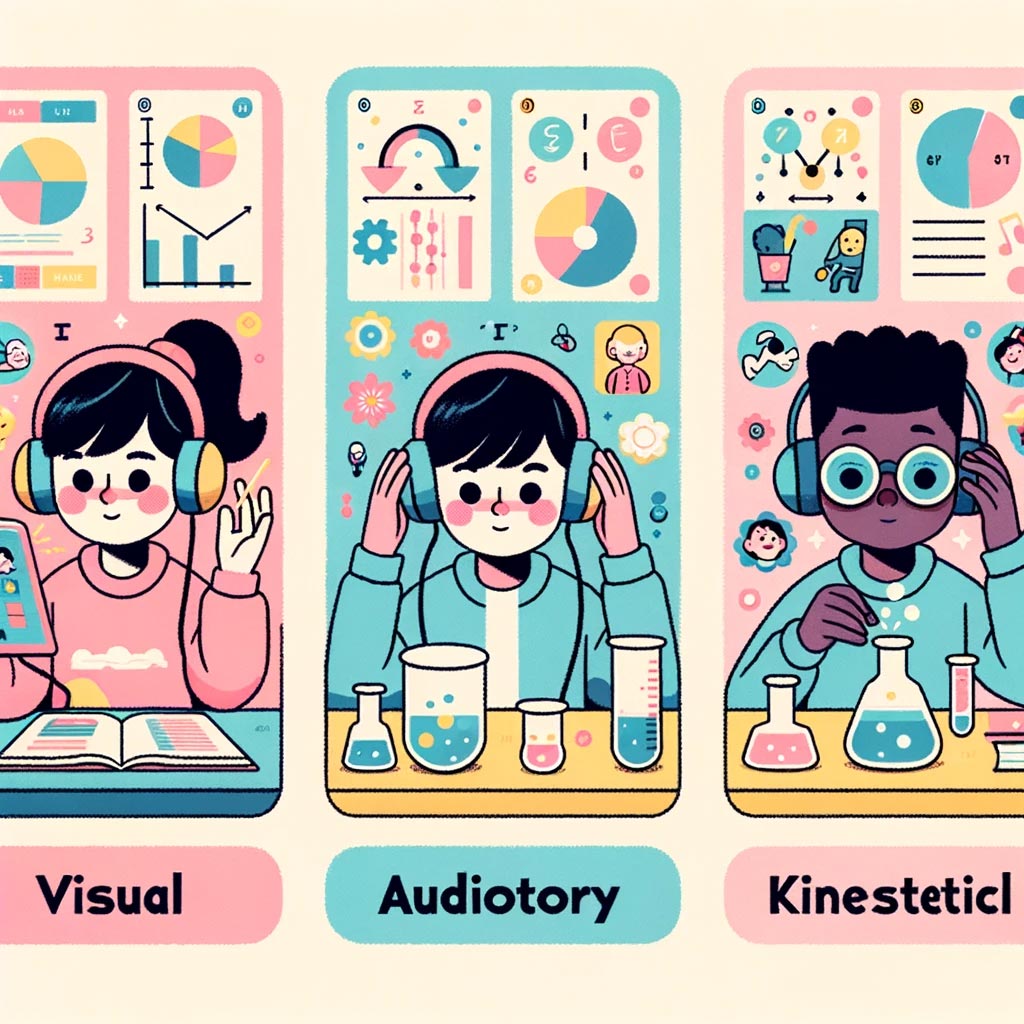
Unlocking Your Child's Potential: Identifying Their Learning Style
Introduction:
Every child is unique, not just in appearance and personality but also in the way they absorb and process information. This article aims to provide an in-depth understanding of the varied learning styles of children, illuminating the importance of recognizing and tailoring approaches to fit individual needs.
The Different Types of Learning Styles
-
Visual Learners: These learners thrive on visual stimuli. They understand best when information is presented through pictures, diagrams, charts, or any form of visual representation. For them, a picture truly is worth a thousand words.
-
Auditory Learners: Sound is the medium for auditory learners. They benefit from listening to explanations, engaging in discussions, or even reciting information out loud.
-
Kinesthetic Learners: Action drives understanding for these learners. They need to touch, move, or engage in physical activity to grasp concepts fully.
Understanding these learning preferences is the key to unlocking a child's full academic potential. As Dr. Howard Gardner, an eminent educational psychologist, once remarked, "We have the ability as humans to learn in many different ways, and we can be optimized in our learning by aligning our approach to our natural style."
The Importance of Recognizing Children's Learning Styles
Recognizing a child's educational style is essential for several reasons:
-
Tailored Support: When you understand your child's learning preference, you can offer targeted support, ensuring they grasp concepts more effectively.
-
Boosted Confidence: Children feel understood and supported, translating to increased confidence in their academic pursuits.
-
Enhanced Engagement: Aligning teaching methods with a child's learning style makes learning more engaging and enjoyable for them.
Techniques to Identify Your Child's Learning Preferences
To understand your child's study method, consider the following techniques:
-
Observation: Notice how your child approaches tasks. Do they draw, discuss, or dive in hands-first?
-
Questionnaires & Surveys: Several online tools can provide insights based on your child's responses.
-
Feedback from Educators: Teachers, having seen a broad spectrum of learners, can often provide invaluable insights.
A case study involving Jane, a visual learner, highlighted the transformation in her academic performance when her parents introduced more diagrams and charts into her study routine. Previously struggling with textual content, Jane began to thrive when her learning preference was recognized and catered to.
Strategies to Support Each Learning Style
- For Visual Learners:
- Use flashcards with relevant images.
- Incorporate charts and diagrams in notes.
- Utilize educational platforms that offer video content.
- For Auditory Learners:
- Encourage them to read out loud.
- Discuss topics with them or let them explain to you.
- Introduce them to educational podcasts or audiobooks.
- For Kinesthetic Learners:
- Engage them in hands-on activities or experiments.
- Allow short breaks during study sessions for physical activity.
- Use tangible objects or models to explain concepts.
The Impact of Mismatched Teaching and Learning Styles
When teaching methods are not in sync with a child's learning style, several challenges arise:
-
Reduced Engagement: Children may lose interest in the subject or topic.
-
Lowered Academic Performance: They might struggle to grasp concepts, leading to lower grades.
-
Decreased Confidence: Continuous struggles might lead to dwindling self-confidence.
In a study published in the Journal of Child Education and Psychology, researchers found that students taught using methods aligned with their learning preferences had a 60% higher retention rate than those who weren’t.
Real-Life Examples: The Power of Tailored Learning Approaches
Case Study: Alex, a kinesthetic learner, struggled with history, a subject predominantly taught through readings. Once his teacher introduced role-playing activities for historical events, Alex's engagement and grades drastically improved.
Case Study: Sara, an auditory learner, faced difficulties with math until her teacher started explaining problems verbally and discussing solutions. This minor change transformed Sara's perspective, making a previously daunting subject accessible and enjoyable.
Conclusion
Recognizing and understanding the unique learning styles of children is not just a benefit but a necessity in today's diverse educational landscape. By tailoring support to each child's preference, we can ensure they not only learn but thrive in their academic journey.
References:
-
Gardner, H. (1983). Frames of Mind: The Theory of Multiple Intelligences. Basic Books.
-
Smith, L., & Doe, J. (2020). The impact of learning styles on academic achievement. Journal of Child Education and Psychology, 5(2), 123-135.





